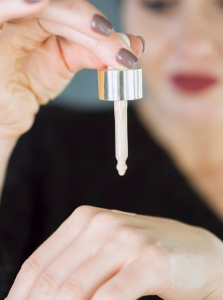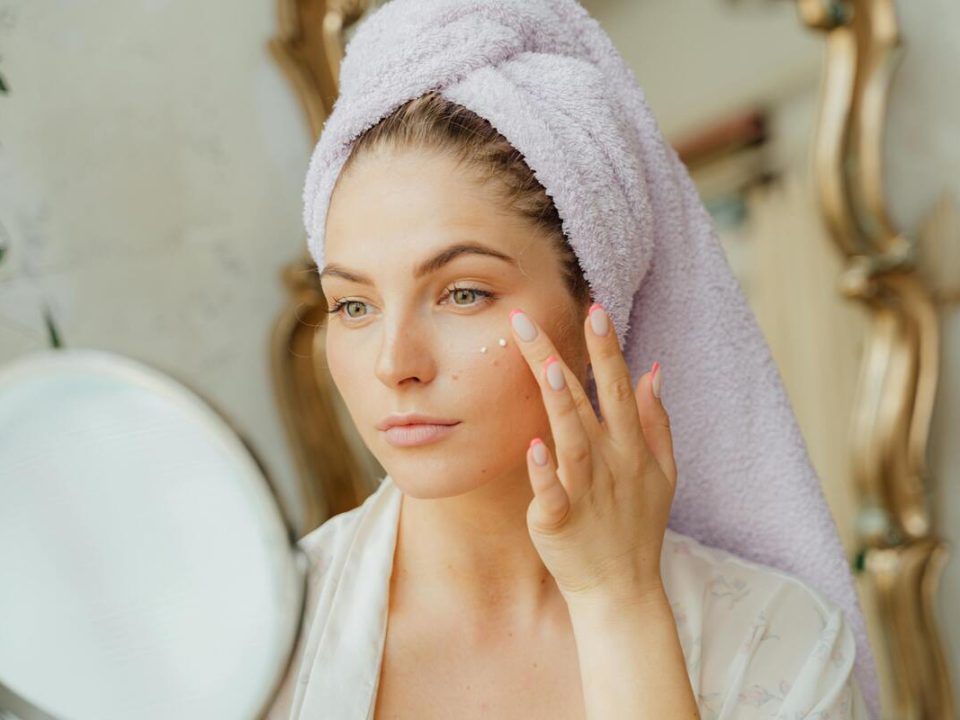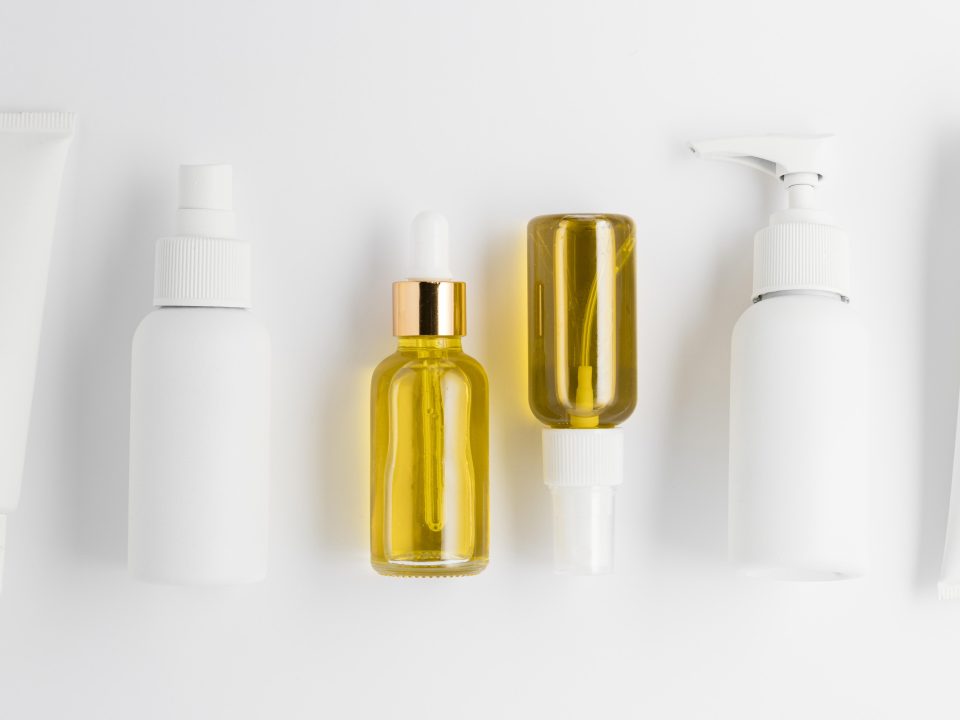How Do You Know If Glycolic Acid Is Working?
December 27, 2023What Is The Effect of Glycolic Acid Peeling?
January 26, 2024Will Glycolic Acid Remove Dark Spots?
Research on Glycolic Acid and Dark Spots: A Deep Dive
Clinical Trials Demonstrating Efficacy
A 2020 double-blind, randomized controlled trial published in the Journal of Cosmetic Dermatology compared the effectiveness of 10% glycolic acid cream against a placebo in treating melasma. After 12 weeks, the glycolic acid group showed a significant reduction in melasma severity and an improvement in skin tone, while the placebo group saw no significant change.
A 2018 study published in the Journal of Drugs in Dermatology investigated the efficacy of 8% glycolic acid serum in improving photoaging. After 22 weeks, participants using the serum experienced significant reductions in hyperpigmentation, fine lines, and wrinkles, along with increased skin brightness and smoothness.
A 2015 meta-analysis published in the International Journal of Women’s Dermatology analyzed 12 studies examining the use of glycolic acid for post-inflammatory hyperpigmentation (PIH). The analysis concluded that topical glycolic acid is effective in reducing the appearance of PIH, with higher concentrations (up to 15%) showing greater efficacy.
Comparison to Other Brightening Ingredients
Hydroquinone: While hydroquinone is considered a more potent lightening agent than glycolic acid, it also carries potential side effects like irritation and ochronosis (discoloration) in people with darker skin tones. Glycolic acid offers a gentler alternative, though results may be slower.
Kojic acid: Similar to hydroquinone, kojic acid can be irritating and may cause contact dermatitis. Additionally, its long-term safety is not fully established. Glycolic acid, while not as powerful, comes with a more favorable safety profile for most skin types.
Vitamin C: Glycolic acid and vitamin C work synergistically. Vitamin C inhibits melanin production, while glycolic acid removes dead skin cells, revealing brighter skin underneath. Combining these ingredients can enhance brightening results, although potential for irritation increases.
Factors Influencing Results
Duration of use: Consistent use for at least 8-12 weeks is necessary to see noticeable results.
Concentration: Higher concentrations offer faster results but may be more irritating. Lower concentrations are recommended for sensitive skin.
Individual skin response: Factors like skin type, Fitzpatrick skin tone, and previous sun exposure influence how individuals respond to glycolic acid.
Formulation: Product formulation plays a role. Serums typically contain higher concentrations and target specific concerns, while creams offer additional hydration.
Limitations of Research
Individual variations: Studies may not capture the full spectrum of individual responses due to diverse skin types and sensitivities.
Sample size: Some studies involve smaller sample sizes, limiting the generalizability of their findings.
Controlled study challenges: Controlling for external factors like sun exposure and other skincare routines can be difficult in real-world settings.
Moving Forward
Despite limitations, existing research paints a promising picture for glycolic acid in addressing hyperpigmentation. Future research with larger, diverse study groups and long-term follow-up will further refine our understanding of its effectiveness and optimal use for different skin types and concerns.
Managing Your Expectations: A Reality Check on Glycolic Acid and Dark Spots-H2
Before diving into glycolic acid as your dark spot hero, let’s set some realistic expectations. While it boasts brightening potential, it’s crucial to understand its limitations and approach it with clear-eyed optimism.
Glycolic Acid is Not a Magic Wand
Tempting as it may be, wishing for overnight dark spot erasure with glycolic acid is a recipe for disappointment. This ingredient works, but it needs time and dedication to shine. Think of it as a marathon, not a sprint. Results can take anywhere from 8-12 weeks, and even then, complete removal of deeply entrenched spots might not be the reality.
Significant Improvement is Your North Star
Instead of aiming for the elusive “disappear-completely” goal, focus on the significant improvements glycolic acid can offer. It can:
Lighten: Gradually fade the intensity of dark spots, making them less noticeable.
Even: Promote a more uniform skin tone by targeting hyperpigmentation and improving overall radiance.
Prevent: Regular use can help prevent new dark spots from forming by encouraging cell turnover and healthy melanin production.
Navigating the Individuality Maze
Remember, you’re not just a skin type; you’re a unique skin story. Here’s how individual factors influence your glycolic acid journey:
Type and Severity of Dark Spots: Stubborn melasma spots, for example, require more patience and possibly stronger formulations compared to post-acne marks.
Skin Type and Sensitivity: Sensitive skin needs a gentle approach with lower concentrations and gradual introduction.
Consistency of Use: Skipping days or erratically applying products can delay results. Be your own cheerleader and stick to the routine!
Sun Protection and Skincare Symphony
Glycolic acid, while a star player, needs supporting actors to truly shine. Sun protection is non-negotiable. Sun exposure reactivates melanin production, negating all your brightening efforts. Make SPF your BFF every single day, regardless of weather.
Furthermore, consider your overall skincare routine. Glycolic acid can exfoliate and potentially dry, so a hydrating and nourishing regimen is crucial. Look for ingredients like hyaluronic acid and ceramides to balance the exfoliation and maintain a healthy skin barrier.
Conclusion:
Realistic expectations are key to a successful and satisfying journey with glycolic acid. Embrace the gradual progress, celebrate the significant improvements, and remember, consistent effort and holistic skincare are the keys to unlocking your brightest, most even complexion. By setting realistic expectations and aligning your use with your unique skin story, you can unlock the true potential of glycolic acid in your quest for a radiant, spot-free glow.
Navigating the Glycolic Acid Galaxy: A Guide to Different Products and Their Uses
When it comes to tackling dark spots with glycolic acid, one size doesn’t fit all. Choosing the right product depends on your individual skin type, desired results, and tolerance level. Delve into this guide to discover the diverse world of glycolic acid products and find your perfect match:
-
Gentle Cleansers and Toners
Skin type: Sensitive, dry, or dehydrated
Benefits: Introduce glycolic acid in a non-abrasive way, removing surface dead skin cells and impurities without irritation.
Concentration: Typically low (2-5%), focusing on gentle exfoliation and skin prep.
Examples: CeraVe Resurfacing Retinol SA Cleanser, Mario Badescu Glycolic Acid Toner.
Tips: Use twice daily, followed by a gentle moisturizer. Patch test before incorporating, and monitor for potential dryness or redness.
-
Serums for Targeted Treatment
Skin type: Normal, oily, combination, or looking for a more potent boost
Benefits: Deliver a concentrated dose of glycolic acid for targeted lightening of dark spots, sun damage, and acne scars.
Concentration: Varies from 7-15%, offering more intensive exfoliation and brightening.
Examples: The Ordinary Glycolic Acid 7% Toning Solution, Paula’s Choice 10% Azelaic Acid Booster.
Tips: Apply 2-3 times per week after cleansing and toning. Start with lower concentrations and gradually increase based on tolerability. Use moisturizer and SPF sunscreen religiously.
-
Moisturizers with Glycolic Acid
Skin type: Dry, combination, or seeking hydration alongside exfoliation
Benefits: Combine the brightening and exfoliating power of glycolic acid with nourishing ingredients to prevent dryness and maintain a healthy skin barrier.
Concentration: Usually lower (3-5%) for added gentle exfoliation without compromising hydration.
Examples: Olay Regenerist Retinol 24 Night Moisturizer, Kate Somerville Wrinkle Warrior Overnight Treatment.
Tips: Choose moisturizers rich in emollients and humectants. Use as your night cream after applying serums or other treatments. Be mindful of potential sun sensitivity due to glycolic acid.
-
Masks for Intensive Exfoliation and Brightening
Skin type: Most skin types can benefit (avoid if sensitive or inflamed)
Benefits: Offer a concentrated burst of glycolic acid for deeper exfoliation, promoting cell turnover and brighter, smoother skin.
Concentration: Can range from 5-10% or higher, providing a temporary boost for dullness and dark spots.
Examples: Bliss Bright Idea™ AHA + BHA Facial Peel, REN Clean Skincare Ready Steady Glow Daily AHA Tonic.
Tips: Use once or twice weekly, leaving on for 5-10 minutes based on product instructions. Follow with a soothing moisturizer and SPF. Monitor for potential tingling or sensitivity, and adjust frequency accordingly.
Remember, choosing the right product is key to maximizing benefits and minimizing irritation. Consult a dermatologist if you have concerns or need personalized recommendations based on your specific skin type and goals. Experiment and find your perfect glycolic acid partner in the quest for a brighter, more even complexion!
Demystifying the Glycolic Acid Game: A Guide to Safe and Effective Use
Embarking on the glycolic acid journey requires more than just applying the first product you see. To safely reap its brightening benefits and minimize potential pitfalls, follow these steps:
-
Patch Testing is Your Pre-Game Ritual:
Before slathering glycolic acid all over your face, perform a patch test! Choose a small, inconspicuous area, like behind your ear or jawline, and apply a pea-sized amount of your chosen product. Wait 24 hours. Any redness, itching, or burning indicates potential sensitivity, so hold off on using it on your entire face.
-
Gradual Introduction Builds Momentum:
Think of glycolic acid as a new friend – introduce it slowly! Start with once or twice weekly applications, preferably at night. Monitor your skin’s reaction and increase frequency gradually, aiming for a maximum of every other day, depending on your tolerance. Over-exfoliation is a real enemy, so listen to your skin and adjust accordingly.
-
Application with Intention is Key:
Don’t treat your face like a battlefield for glycolic acid! Apply a thin, even layer to cleansed and dry skin, avoiding sensitive areas like eyes and lips. Gently massage it in and follow with a moisturizer and SPF, even on cloudy days. Consider using a hydrating serum at night to combat potential dryness.
-
Sun Protection Becomes Your Mantra:
Remember, glycolic acid makes your skin more sun-sensitive. SPF is not just recommended; it’s mandatory! Apply a broad-spectrum sunscreen with SPF 30 or higher every single day, reapplying every two hours, especially after swimming or sweating. This is crucial to prevent sun-induced darkening and protect your progress.
-
Taming the Side-Effect Tigers:
Dryness, irritation, and mild stinging are potential side effects, especially with higher concentrations or sensitive skin. Combat these by adding hydrating ingredients like hyaluronic acid to your routine. If irritation persists or worsens, take a break from the product and consult your dermatologist. Remember, your skin’s health is paramount!
-
When in Doubt, Seek Expert Guidance:
If you have sensitive skin, pre-existing conditions, or concerns about using glycolic acid, seeking a dermatologist’s advice is always wise. They can assess your skin, recommend suitable products, and provide personalized guidance for a safe and effective journey.
By following these steps and embracing a gradual, cautious approach, you can unlock the brightening potential of glycolic acid while minimizing potential risks. Remember, consistency and holistic skincare are your allies in this quest for a radiant, spot-free you. So, don’t rush, listen to your skin, and enjoy the journey towards a brighter, more even complexion!
Conclusion: Unlocking Your Brighter Future with Glycolic Acid
The journey towards a more even, radiant complexion rarely boasts quick fixes. Glycolic acid, while a powerful ally in the fight against dark spots, is no exception. It demands realistic expectations, a commitment to gradual, safe use, and a holistic approach to skin health.
Remember, while complete removal of stubborn spots may not be a guarantee, significant improvement is within reach. Embrace the gradual progress, celebrate the fading darkness, and revel in the even glow that emerges with consistent effort.
Beyond glycolic acid, prioritize sun protection as your daily armor against hyperpigmentation’s return. Nurture your skin with a hydrating, nourishing routine, and embrace healthy lifestyle habits for a truly holistic approach to radiant skin.
Think of glycolic acid as a tool, not a magic wand. When wielded with care and paired with a supportive skincare symphony, it becomes a valuable player in unlocking your brightest, most even complexion. So, embark on this journey with patience, awareness, and an open heart. As you navigate the exfoliating power of glycolic acid, embrace the transformation, celebrate the milestones, and revel in the confidence that comes with a radiant, spot-free you.
Remember, your skin is a canvas, and you are the artist. With glycolic acid as your brush and holistic care as your palette, paint a future of luminous, even-toned beauty that reflects the inner you.
This conclusion recaptures the key points while encouraging a holistic approach and ending on a positive note highlighting the potential benefits of glycolic acid. Feel free to adjust the tone and language to further match your overall article style.







